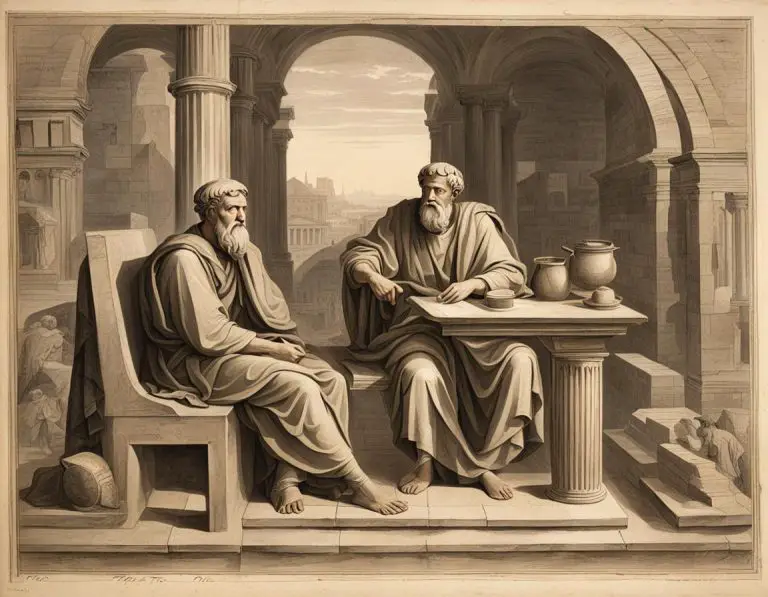The Impact of Tripartite Soul on Behavior
The concept of the tripartite soul, as proposed by ancient philosophers like Plato, has profound implications on human behavior. According to this theory, the soul is divided into three parts: the rational, spirited, and appetitive. Each of these parts influences our actions and decisions in unique ways, shaping our character and determining our moral compass.
The rational part of the soul is associated with intellect and reason, guiding us in making logical and wise choices. When this part is dominant, individuals tend to act in accordance with virtues such as wisdom and prudence. On the other hand, the spirited part is linked to our emotions and attitudes towards honor and ambition. This aspect of the soul drives us to seek recognition, assert ourselves, and defend our beliefs. Finally, the appetitive part of the soul governs our desires and pleasures, often leading us to pursue immediate gratification and material satisfaction.
Decision Making
Decision making is a complex process that involves the interaction of different aspects within an individual. According to the concept of the tripartite soul, decision making can be influenced by the rational, spirited, and appetitive parts of the soul. The rational part, represented by reason and wisdom, plays a crucial role in guiding decision making by analyzing information and evaluating consequences.
The spirited part of the soul, driven by emotions and desires, can also impact decision making by influencing the individual’s motivations and attitudes. When the spirited part is balanced and aligned with reason, it can provide the necessary drive and determination to make sound decisions. However, when the spirited part is not in harmony with reason, it may lead to impulsive or irrational decision making. By understanding the interplay between these different elements of the soul, individuals can gain insight into their decision-making processes and work towards making more informed choices.
Development of the Tripartite Soul
The development of the tripartite soul can be traced back to ancient Greek philosophy, particularly the works of philosophers such as Plato and Aristotle. According to this theory, the human soul consists of three distinct parts: the rational part, the spirited part, and the appetitive part. Each part plays a crucial role in shaping an individual’s thoughts, emotions, and actions.
Plato, in his allegory of the chariot, presents a vivid description of the tripartite soul. He compares the soul to a charioteer driving a chariot pulled by two horses: a noble, spirited horse representing the rational part of the soul, and a base, appetitive horse symbolizing the desires and impulses of the appetitive part. The charioteer must skillfully guide both horses to achieve harmony and balance within the soul, ultimately leading to a virtuous and fulfilling life.
Education and Training
Education and training play a crucial role in shaping the tripartite soul according to the philosophical framework proposed by Plato. In this context, it is essential to understand that the three elements of the soul – reason, spirit, and appetite – need to be harmoniously developed through proper education and training practices. By cultivating virtues and knowledge through education, individuals can achieve a balance within their souls, leading to a more harmonious and virtuous life.
Furthermore, training in ethics and morality is vital for individuals to navigate the complexities of life and make sound decisions in alignment with reason. Through education that emphasizes the development of moral character and the cultivation of wisdom, individuals can strengthen their rational faculties and temper their spirited and appetitive desires. This holistic approach to education and training aims to guide individuals towards the realization of their full potential and the attainment of eudaimonia, or flourishing, as envisioned in Plato’s tripartite soul framework.
The Tripartite Soul in Philosophy
The concept of the tripartite soul in philosophy delves into the division of the human psyche into three distinct parts: reason, spirit, and desire. This ancient idea has been widely explored by various philosophers throughout history, shedding light on the complexities of human nature and behavior.
Plato’s Allegory of the Chariot, a prominent allegory illustrating the tripartite soul, showcases a charioteer representing reason guiding two horses symbolizing spirit and desire. This allegory emphasizes the importance of maintaining harmony and balance among these three elements to achieve a virtuous and fulfilled life.
Plato’s Allegory of the Chariot
In Plato’s Allegory of the Chariot, the philosopher presents a vivid analogy to illustrate the complexities of the human soul. He describes a chariot being pulled by two winged horses and steered by a charioteer. The chariot symbolizes the soul, the two horses represent the conflicting elements of human nature, and the charioteer embodies reason and intellect. According to Plato, the white horse embodies noble qualities such as courage and wisdom, while the black horse symbolizes base desires and impulses. The charioteer must skillfully navigate these opposing forces to maintain harmony and achieve enlightenment.
Through this allegory, Plato highlights the importance of self-discipline, moral integrity, and intellectual cultivation in the pursuit of a virtuous life. The charioteer’s ability to guide the horses towards the divine realm signifies the soul’s ultimate goal of transcending worldly distractions and attaining spiritual truth. By aligning the three parts of the soul – reason, spirit, and appetite – individuals can achieve inner balance and lead a fulfilling existence in accordance with universal principles of morality and justice. Plato’s Allegory of the Chariot serves as a timeless reminder of the ongoing struggle between reason and passion within the human psyche, urging individuals to strive towards the harmonious integration of these warring elements.
Related Links
What You Need to Know About The Philosopher King
How to Interpret The Allegory of the Cave

